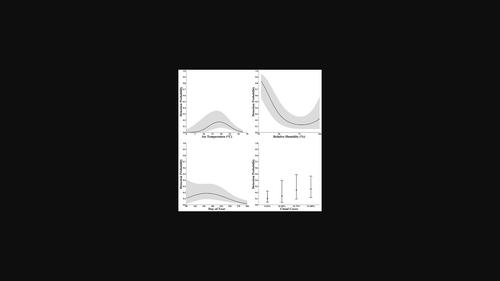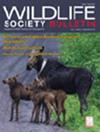估算探测柯特兰蛇(Clonophis kirtlandii)所需的工作量
IF 1.5
4区 环境科学与生态学
Q3 Environmental Science
引用次数: 0
摘要
蛇类因其隐蔽的颜色、极少的活动以及使用难以接近的栖息地而难以研究。虽然在物种的活跃季节进行适时调查可以提高发现率并节约调查资源(如时间和金钱),但调查工作可能无法确保发现稀有和隐蔽物种。因此,在这种情况下,需要针对特定物种进行战略性的取样设计。柯特兰蛇(Clonophis kirtlandii)是一种罕见的隐蔽物种,据推测其分布范围正在缩小。自然学家注意到,自 20 世纪 70 年代初以来,柯特兰蛇已从不同的栖息地消失。我们研究的主要目的是确定克氏蛇的探测情况以及影响探测的环境和时间因素。我们通过估算 2019 年至 2021 年伊利诺伊州 3 个已知柯特兰蛇种群的检测概率,计算了在检测点检测个体所需的努力。根据在 3 个研究地点的 226 次实地考察(34.1%)中检测到 77 条柯特兰蛇的结果,我们发现高云层、适中的气温和低相对湿度会提高该物种的检测概率。5 月中旬至 7 月初是进行调查的最佳时间,此时的发现率最高。正如我们的研究结果所表明的那样,当务之急是建立战略监测计划,最大限度地利用保护资源,记录克氏蛇等受保护物种的种群数量,以便采取保护行动和应对其分布范围的变化。本文章由计算机程序翻译,如有差异,请以英文原文为准。

Estimating the effort required to detect Kirtland's snakes (Clonophis kirtlandii)
Snakes are difficult to study due to their cryptic coloration, minimal movements, and use of inaccessible habitats. Although well-timed surveys during a species' active season can result in higher detection rates and conserve survey resources (i.e., time and money), survey effort may not ensure the detection of rare and cryptic species. Thus, in such instances, a strategic species-specific sampling design is needed. The Kirtland's snake (Clonophis kirtlandii) is a rare, cryptic species assumed to be experiencing range-wide declines. Naturalists have noted the disappearance of Kirtland's snakes from various habitats since the early 1970s. The primary objective of our study was to determine detection of Kirtland's snakes and the environmental and temporal factors influencing detection. We calculated the effort needed to detect individuals at sites by estimating detection probabilities of 3 known Kirtland's snake populations in Illinois from 2019 to 2021. Based on 77 Kirtland's snake detections over 226 site visits (34.1%) across 3 study sites, we found that high cloud cover, moderate air temperature, and low relative humidity enhanced the detection probability of this species. The middle of May to the beginning of July was the best time to conduct surveys when detection rates were highest. As our results suggested, it is imperative to establish strategic monitoring programs maximizing conservation resources to document populations for conservation action and range shifts for species of conservation concern, such as Kirtland's snakes.
求助全文
通过发布文献求助,成功后即可免费获取论文全文。
去求助
来源期刊

Wildlife Society Bulletin
BIODIVERSITY CONSERVATION-
CiteScore
2.10
自引率
13.30%
发文量
0
期刊介绍:
The Wildlife Society Bulletin is a journal for wildlife practitioners that effectively integrates cutting edge science with management and conservation, and also covers important policy issues, particularly those that focus on the integration of science and policy. Wildlife Society Bulletin includes articles on contemporary wildlife management and conservation, education, administration, law enforcement, and review articles on the philosophy and history of wildlife management and conservation. This includes:
Reports on practices designed to achieve wildlife management or conservation goals.
Presentation of new techniques or evaluation of techniques for studying or managing wildlife.
Retrospective analyses of wildlife management and conservation programs, including the reasons for success or failure.
Analyses or reports of wildlife policies, regulations, education, administration, law enforcement.
Review articles on the philosophy and history of wildlife management and conservation. as well as other pertinent topics that are deemed more appropriate for the Wildlife Society Bulletin than for The Journal of Wildlife Management.
Book reviews that focus on applied research, policy or wildlife management and conservation.
 求助内容:
求助内容: 应助结果提醒方式:
应助结果提醒方式:


